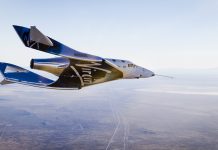Scientists are looking forward to studying carbonate rocks on Mars and unlocking their secrets.
Mars 2020 Mission scientists are filled with excitement this week as Perseverance approaches a special geological layer that was instrumental in selecting the landing site for exploration in the Jezero Crater region. This layer is found in a narrow band along the inner rim of the crater’s western rim and exhibits strong carbonate mineral characteristics.

On Earth, carbonates typically form in shallow waters of fresh or alkaline lakes. The hypothesis is that the carbonate layer on Mars could have formed in the same way – more than 3 billion years ago, the waters of the lake in the Eezero crater may have flowed onto its shores, depositing this carbonate layer. An alternative hypothesis is that carbonates form through mineral carbonation when silicate minerals (such as olivine) react with CO? and turn into carbonates.
It can tell about the past atmosphere and life on Mars
Carbonates are of interest for several reasons. First, they can provide insight into Mars’ former atmosphere. These minerals are formed through a sequence of chemical reactions that begin with the interaction of carbon dioxide from the atmosphere with liquid water. Thus, by studying the amount and isotopic composition of these carbonates, scientists will be able to conclude the past content of CO2 in the atmosphere of Mars. and gain insight into its climate history.
Secondly, carbonate minerals are an excellent medium for preserving traces of ancient life, if they existed. When carbonates are deposited early in rock formation, they can trap the resulting environment, including signs of microbial life.
On Earth, carbonate minerals have been observed to form around microbial cells, enclosing them and rapidly turning them into fossils. This is especially valuable because a microorganism that is “sealed” in carbonate can persist for a very long time. Another example of fossil carbonates on Earth are stromatolites, layered structures created by growing microbial colonies in mineral-saturated waters. Stromatolites provide some of the earliest records of life on Earth.
While we don’t yet know exactly how the boundary rocks and the carbonates within them formed, the team is looking forward to getting into these rocks and unlocking their secrets.




